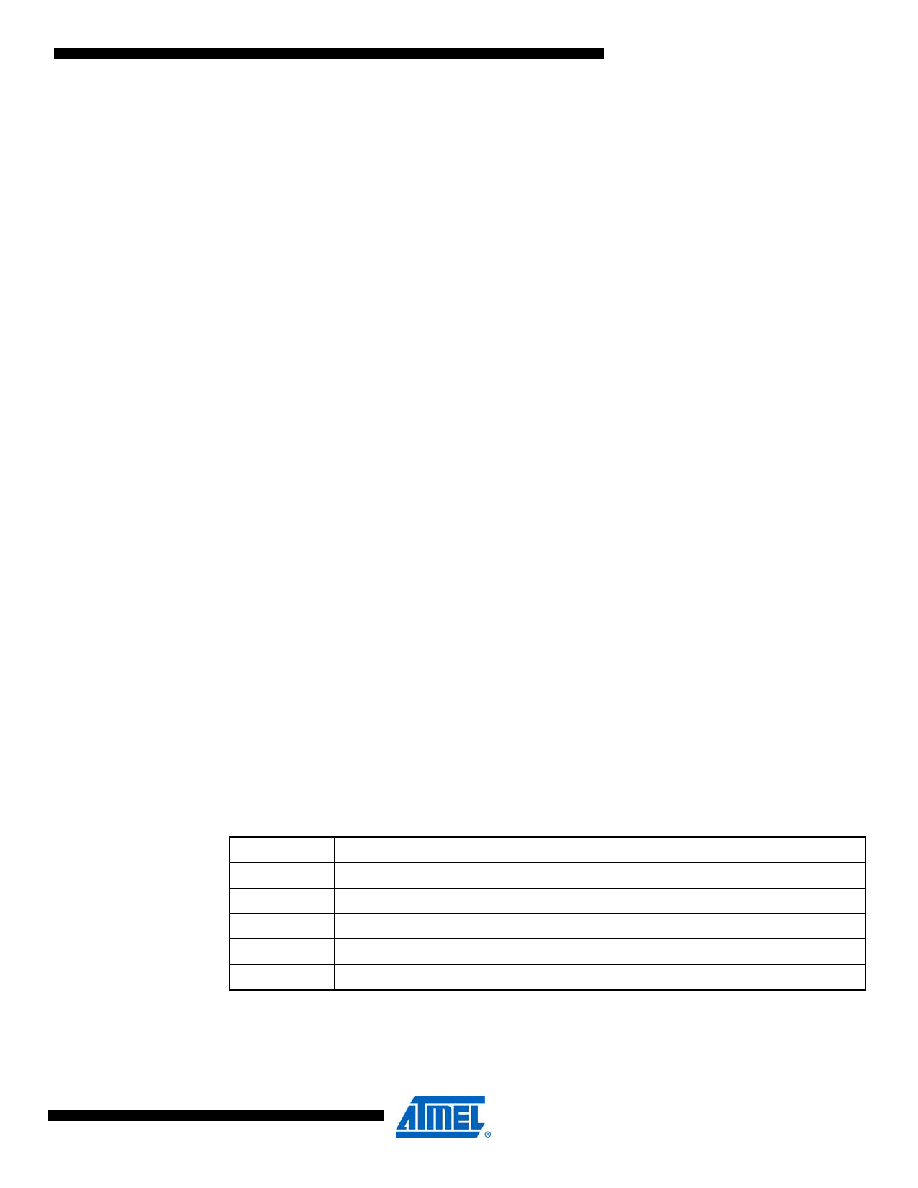- 您現(xiàn)在的位置:買賣IC網 > PDF目錄25637 > MR80C52TXXX-30SBD (ATMEL CORP) 8-BIT, MROM, 30 MHz, MICROCONTROLLER, CQCC44 PDF資料下載
參數資料
| 型號: | MR80C52TXXX-30SBD |
| 廠商: | ATMEL CORP |
| 元件分類: | 微控制器/微處理器 |
| 英文描述: | 8-BIT, MROM, 30 MHz, MICROCONTROLLER, CQCC44 |
| 封裝: | LCC-44 |
| 文件頁數: | 53/141頁 |
| 文件大小: | 7628K |
| 代理商: | MR80C52TXXX-30SBD |
第1頁第2頁第3頁第4頁第5頁第6頁第7頁第8頁第9頁第10頁第11頁第12頁第13頁第14頁第15頁第16頁第17頁第18頁第19頁第20頁第21頁第22頁第23頁第24頁第25頁第26頁第27頁第28頁第29頁第30頁第31頁第32頁第33頁第34頁第35頁第36頁第37頁第38頁第39頁第40頁第41頁第42頁第43頁第44頁第45頁第46頁第47頁第48頁第49頁第50頁第51頁第52頁當前第53頁第54頁第55頁第56頁第57頁第58頁第59頁第60頁第61頁第62頁第63頁第64頁第65頁第66頁第67頁第68頁第69頁第70頁第71頁第72頁第73頁第74頁第75頁第76頁第77頁第78頁第79頁第80頁第81頁第82頁第83頁第84頁第85頁第86頁第87頁第88頁第89頁第90頁第91頁第92頁第93頁第94頁第95頁第96頁第97頁第98頁第99頁第100頁第101頁第102頁第103頁第104頁第105頁第106頁第107頁第108頁第109頁第110頁第111頁第112頁第113頁第114頁第115頁第116頁第117頁第118頁第119頁第120頁第121頁第122頁第123頁第124頁第125頁第126頁第127頁第128頁第129頁第130頁第131頁第132頁第133頁第134頁第135頁第136頁第137頁第138頁第139頁第140頁第141頁

230
8021G–AVR–03/11
ATmega329P/3290P
23. LCD Controller
23.1
Features
Display Capacity of 25/40 Segments and Four Common Terminals
Support Static, 1/2, 1/3 and 1/4 Duty
Support Static, 1/2, 1/3 Bias
On-chip LCD Power Supply, only One External Capacitor needed
Display Possible in Power-save Mode for Low Power Consumption
Software Selectable Low Power Waveform Capability
Flexible Selection of Frame Frequency
Software Selection between System Clock or an External Asynchronous Clock Source
Equal Source and Sink Capability to maximize LCD Life Time
LCD Interrupt Can be Used for Display Data Update or Wake-up from Sleep Mode
Segment and Common Pins not Needed for Driving the Display Can be Used as Ordinary I/O Pins
Latching of Display Data gives Full Freedom in Register Update
23.2
Overview
The LCD Controller/driver is intended for monochrome passive liquid crystal display (LCD) with
up to four common terminals and up to 25/40 segment terminals.
A simplified block diagram of the LCD Controller/Driver is shown in Figure 23-1. For the actual
placement of I/O pins, refer to ”MLF/ Pinout ATmega329P” on page 2 and ”TQFP / Pinout
An LCD consists of several segments (pixels or complete symbols) which can be visible or non
visible. A segment has two electrodes with liquid crystal between them. When a voltage above a
threshold voltage is applied across the liquid crystal, the segment becomes visible.
The voltage must alternate to avoid an electrophoresis effect in the liquid crystal, which
degrades the display. Hence the waveform across a segment must not have a DC-component.
The PRLCD bit in ”PRR – Power Reduction Register” on page 43 must be written to zero to
enable the LCD module.
23.2.1
Definitions
Several terms are used when describing LCD. The definitions in Table 23-1 are used throughout
this document.
Table 23-1.
Definitions
LCD
A passive display panel with terminals leading directly to a segment
Segment
The least viewing element (pixel) which can be on or off
Common
Denotes how many segments are connected to a segment terminal
Duty
1/(Number of common terminals on a actual LCD display)
Bias
1/(Number of voltage levels used driving a LCD display -1)
Frame Rate
Number of times the LCD segments is energized per second.
相關PDF資料 |
PDF描述 |
|---|---|
| MQ80C52EXXX-36/883D | 8-BIT, MROM, 36 MHz, MICROCONTROLLER, CQFP44 |
| MD83C154CXXX-16P883D | 8-BIT, MROM, 16 MHz, MICROCONTROLLER, CDIP40 |
| MR83C154CXXX-25P883R | 8-BIT, MROM, 25 MHz, MICROCONTROLLER, CQCC44 |
| MR83C154XXX-25/883D | 8-BIT, MROM, 25 MHz, MICROCONTROLLER, CQCC44 |
| MD80C32E-16/883 | 8-BIT, 16 MHz, MICROCONTROLLER, CDIP40 |
相關代理商/技術參數 |
參數描述 |
|---|---|
| MR80C86 | 制造商:INTERSIL 制造商全稱:Intersil Corporation 功能描述:CMOS 16-Bit Microprocessor |
| MR80C86/B | 制造商:Rochester Electronics LLC 功能描述:- Bulk 制造商:Harris Corporation 功能描述:Microprocessor, 16 Bit, 44 Pin, Ceramic, LCC |
| MR80C86-2 | 制造商:INTERSIL 制造商全稱:Intersil Corporation 功能描述:CMOS 16-Bit Microprocessor |
| MR80C86-2/883 | 制造商:Rochester Electronics LLC 功能描述:- Bulk |
| MR80C86-2/B | 制造商:Intersil Corporation 功能描述:MPU 80C86 16BIT CMOS 8MHZ 44PLCC - Rail/Tube |
發(fā)布緊急采購,3分鐘左右您將得到回復。